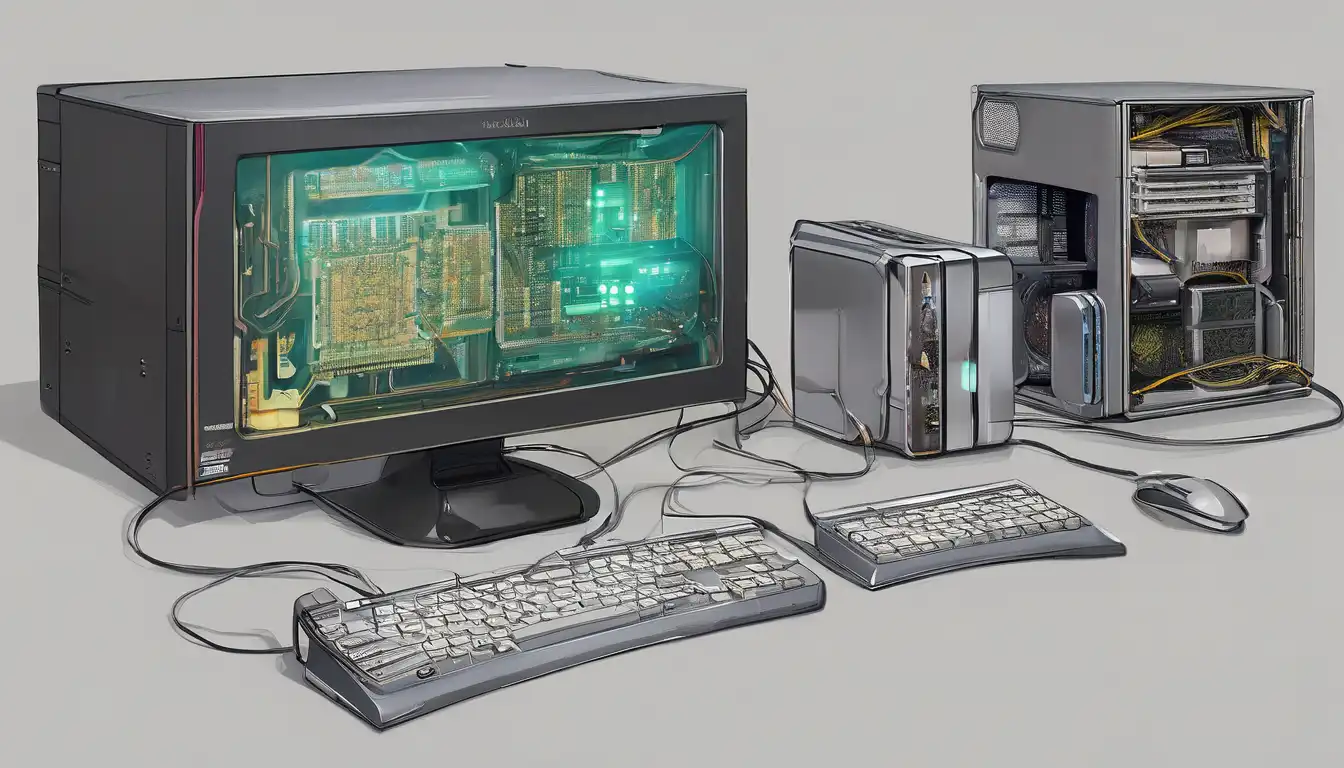Revolutionary Advances in Computer Hardware Technology
The computer hardware landscape is undergoing unprecedented transformation, with innovations emerging at an accelerated pace. From quantum computing breakthroughs to AI-optimized processors, the latest developments are reshaping how we interact with technology. These advancements promise to deliver unprecedented performance, efficiency, and capabilities that were once confined to science fiction.
Next-Generation Processor Architectures
Processor technology has seen remarkable evolution with the introduction of 3D stacking and chiplet designs. Companies like AMD and Intel are pushing boundaries with their latest architectures that incorporate artificial intelligence directly into the silicon. The integration of neural processing units (NPUs) alongside traditional CPUs and GPUs creates a heterogeneous computing environment optimized for modern workloads.
Quantum computing represents perhaps the most significant leap forward. While still in developmental stages, recent breakthroughs in qubit stability and error correction bring practical quantum computing closer to reality. These systems promise to solve complex problems in minutes that would take classical computers thousands of years.
Memory and Storage Revolution
The memory hierarchy is experiencing its own revolution with DDR5 memory becoming mainstream, offering double the bandwidth of previous generations. Meanwhile, storage technology continues its rapid advancement with PCIe 5.0 SSDs delivering read speeds exceeding 12,000 MB/s. The emergence of computational storage drives that process data directly on the storage device reduces latency and improves overall system efficiency.
3D XPoint technology and other non-volatile memory solutions are blurring the lines between traditional RAM and storage, creating new possibilities for instant-on computing and massive data processing capabilities. These innovations are particularly crucial for data-intensive applications like artificial intelligence and big data analytics.
Graphics and Display Technology
Graphics processing units have evolved beyond gaming and professional visualization to become essential components for AI training and scientific computing. The latest GPUs feature dedicated ray tracing cores and tensor cores optimized for machine learning workloads. Real-time ray tracing technology has matured significantly, delivering photorealistic graphics in games and simulations.
Display technology keeps pace with hardware advancements, with microLED and OLED displays offering superior contrast ratios and refresh rates. The integration of high dynamic range (HDR) technology with variable refresh rate (VRR) capabilities creates immersive visual experiences previously unimaginable. These display innovations work in tandem with powerful graphics hardware to redefine visual computing.
Cooling and Power Management
As component densities increase, thermal management becomes increasingly critical. Advanced cooling solutions including liquid cooling systems with intelligent pump control and phase-change materials are becoming more accessible. These systems maintain optimal operating temperatures while minimizing noise levels, ensuring sustained peak performance.
Power efficiency has become a primary design consideration across all hardware categories. Innovations in voltage regulation and power delivery systems enable components to operate at higher efficiencies across varying workloads. The move toward more efficient power supplies with higher certification ratings (80 Plus Titanium) reduces energy consumption and heat generation.
Connectivity and Peripheral Advances
The latest connectivity standards are transforming how devices communicate. USB4 and Thunderbolt 4 offer unprecedented data transfer speeds and power delivery capabilities. Wireless technologies including Wi-Fi 6E and Bluetooth 5.3 provide more reliable connections with lower latency, essential for modern computing environments.
Peripheral technology has seen significant innovation with mechanical keyboards featuring optical switches, high-precision gaming mice with sub-micron accuracy, and VR controllers with haptic feedback. These advancements enhance user interaction and create more immersive computing experiences. The integration of biometric authentication directly into peripherals adds security convenience.
Emerging Hardware Technologies
Several emerging technologies promise to redefine computer hardware in the coming years. Neuromorphic computing chips that mimic the human brain's neural structure offer revolutionary efficiency for pattern recognition tasks. Photonic computing using light instead of electricity for data transmission could eliminate bandwidth limitations entirely.
Advanced materials science is contributing to hardware innovation with graphene-based transistors and carbon nanotube interconnects showing promise for future semiconductor manufacturing. These materials offer superior electrical properties and thermal characteristics compared to traditional silicon, potentially extending Moore's Law beyond current limitations.
Impact on Various Industries
The latest hardware innovations are transforming industries across the spectrum. In healthcare, powerful computing systems enable real-time medical imaging analysis and drug discovery simulations. The financial sector benefits from accelerated transaction processing and risk analysis capabilities. Creative industries leverage enhanced graphics and processing power for realistic rendering and complex simulations.
Scientific research advances with hardware capable of modeling complex systems from climate patterns to molecular interactions. The gaming industry continues to push hardware boundaries with increasingly immersive experiences. These cross-industry applications demonstrate the far-reaching impact of ongoing hardware innovation.
Future Outlook and Trends
The trajectory of computer hardware innovation points toward increased specialization and integration. We can expect to see more application-specific integrated circuits (ASICs) optimized for particular workloads like AI inference or cryptographic operations. The convergence of hardware and software through frameworks like heterogeneous computing will continue to accelerate.
Sustainability will become increasingly important in hardware design, with focus on recyclable materials, energy efficiency, and longer product lifecycles. The industry is moving toward modular designs that allow easier upgrades and repairs, reducing electronic waste. These trends indicate a future where computer hardware becomes more powerful, efficient, and environmentally conscious.
As we look ahead, the boundaries between different computing paradigms will continue to blur. Edge computing, cloud infrastructure, and personal devices will form seamless ecosystems powered by these hardware innovations. The ongoing evolution promises to unlock new possibilities in artificial intelligence, virtual reality, and computational capabilities we can only begin to imagine.
